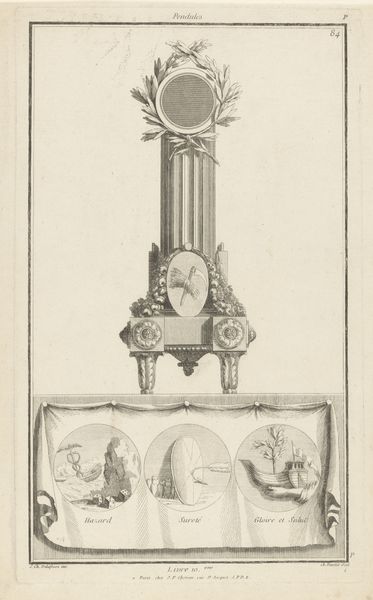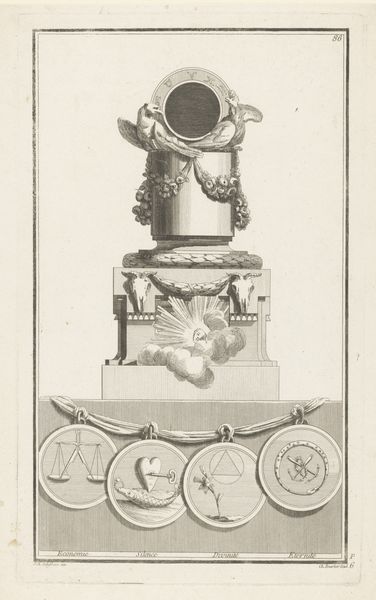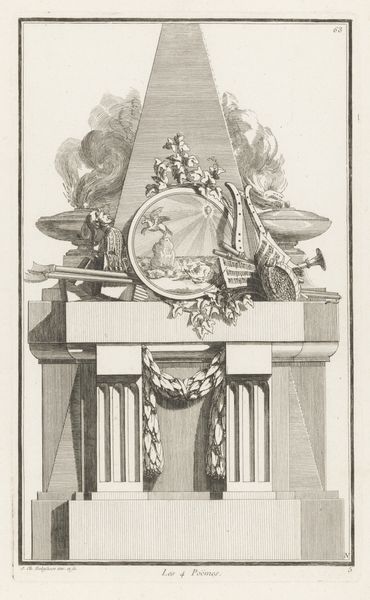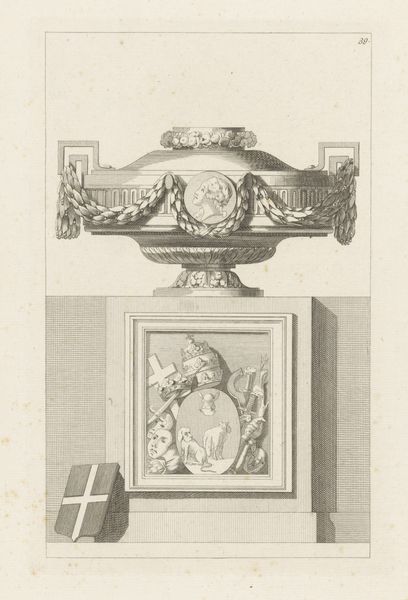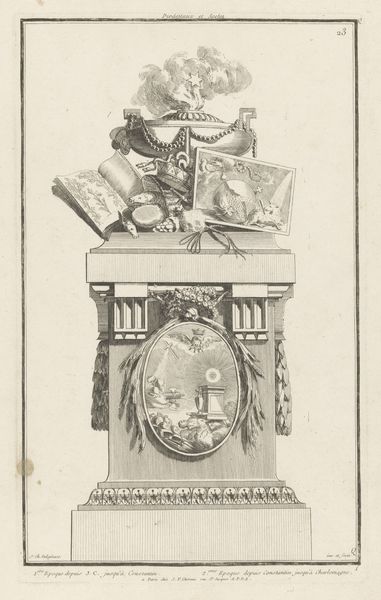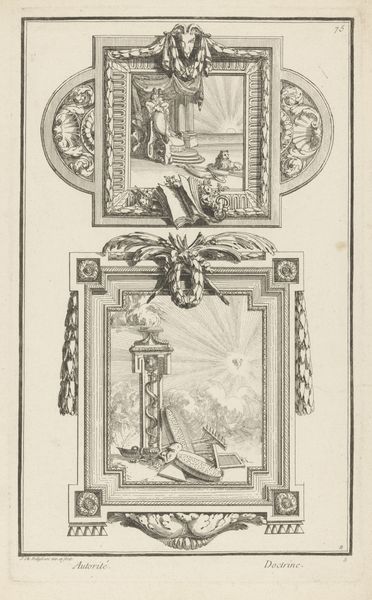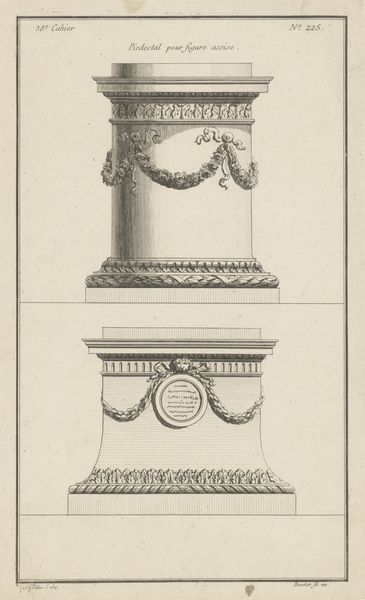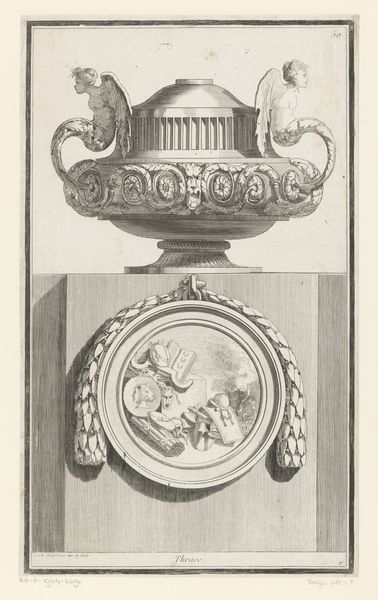
drawing, engraving
#
drawing
#
neoclacissism
#
allegory
#
caricature
#
form
#
geometric
#
line
#
academic-art
#
engraving
Dimensions: height 383 mm, width 234 mm
Copyright: Rijks Museum: Open Domain
Charles Beurlier made this print, "Hospitality, Appreciation, Patience and Dedication", using etching and engraving. The piece employs a visual language of allegory, common in the 18th century, to communicate abstract virtues through symbolic representation. Made during the Enlightenment, most likely in France, this artwork reflects the era's emphasis on reason, morality, and social order. Each virtue—hospitality, appreciation, patience, and dedication—is depicted through emblematic scenes designed to be ‘read’ by an educated public. The setting suggests a commission, perhaps from a civic institution, aiming to promote these qualities within society. Notice how the imagery subtly reinforces existing social hierarchies, casting these virtues as ideals to be aspired to. To fully understand the print, one might consult emblem books popular at the time, which catalogued and explained the meanings of various symbols. Art historians investigate such objects to discover how social values are visually encoded and promoted through institutional channels.
Comments
No comments
Be the first to comment and join the conversation on the ultimate creative platform.

